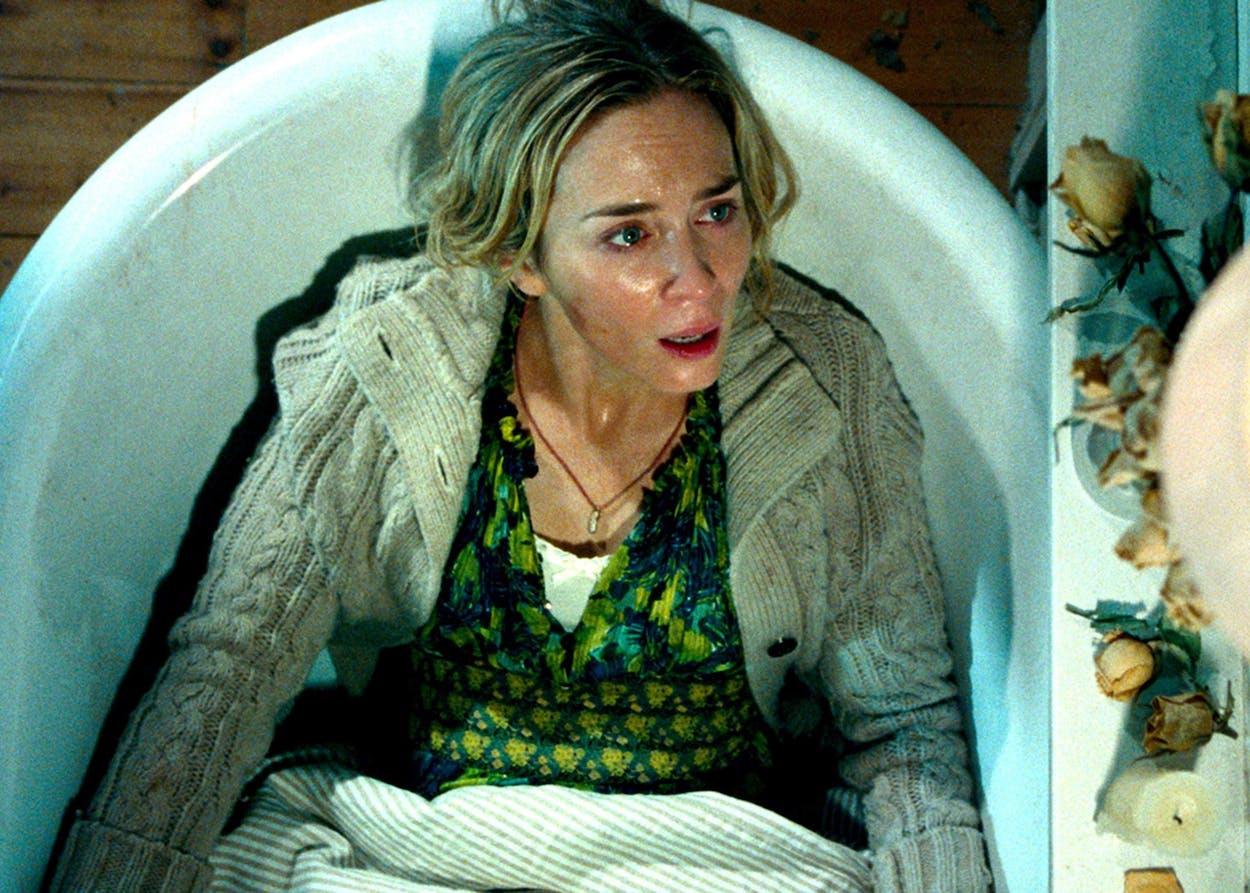There’s a lot that could have gone wrong with the opening night film of SXSW 2018. It’s a horror movie, more or less (gore fans might prefer “thriller,” but those who enjoy a good jump-scare will have plenty of watch-through-your-fingers moments), which is a genre prone to uneven execution. It’s directed by (and stars) John Krasinski, an actor best known for his work on a beloved sitcom a decade ago. The plot is the highest of high-concept ideas—the sort of thing that could easily be a gimmick in less-than-capable hands—and more than half of the cast are children. But all of that stuff, it turns out, works out in a genuinely terrifying turn, giving Krasinski’s career a fresh, “Huh, who knew he could do that?” slant at a crucial time.
The central conceit of A Quiet Place is that, a few months before the film opened, alien monsters landed on Earth. Through trial and error (if the empty streets are any indication, mostly error), people learned that they hunt by sound. A family of five, led by Krasinski and his film- (and real-life) wife Emily Blunt, navigate the landscape of their unspecified New York-area town silently, pouring sand along their most frequently-trodden paths, communicating via American sign language, and keeping very, very quiet as they move through the world.
Keeping silent is hard, and it becomes harder when Blunt’s character gets pregnant. How do you give birth silently—and what do you do with a crying baby when any noise means death-by-alien-mandible?
In that way, A Quiet Place is in the tradition of the best horror films and thrillers. It’s about giant space monsters that eat people (and, in one memorable scene, raccoons) when they make too much noise, but it’s really about the fears that tend to accompany parenthood: How are we going to do this? Can we keep these kids safe? It’s also about grief, loss, love, and the tension that comes from watching people who are no longer able to do the most mundane tasks without their lives being in jeopardy at every moment.
Watching A Quiet Place is a tense experience—you’ve never been more aware of the coughs and sniffles of the people in the audience with you—and the movie is extremely interested in the tension inherent in its premise. The use of sound is captivating; it’s not a silent film, but it’s not a spoiler to say that the dialogue is sparse throughout, and that most of the sounds you hear in the film are very, very deliberate. This allows Krasinski, as a filmmaker, to explore unique horror in the mundane. In the real world, dropping a glass or pushing a button on a battery-powered toy is an unremarkable experience. What would it mean if those things were life-and-death scenarios?
These are the questions that A Quiet Place asks. There’s a rare kind of world-building, and a commitment to the premise that we don’t see often enough—it’s like one of the best episodes of The Twilight Zone in its dedication to ensuring that, anytime a character interacts with the central conceit of the story (in this case, silence), the consequences of that decision are on the fore of the audience’s mind. And as far as setting a tone for the festival’s films to follow, A Quiet Place makes for a heck of a start.








